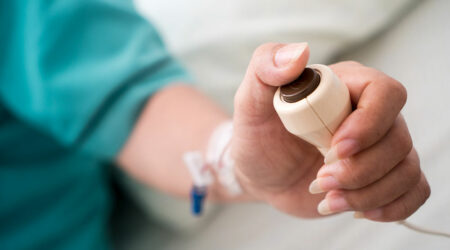
5 simple tips to reverse kidney disease
Kidney disease is a health condition wherein the organ gets damaged and doesn’t filter blood like usual. People with diabetes and high blood pressure are at an increased risk of developing this condition. Although there is no cure, one can slow down the progression of kidney disease symptoms by following meal plans and lifestyle changes that improve kidney function. Listed below are some nutritional and lifestyle changes to consider while dealing with kidney disease symptoms.
Restricting salt intake
The sodium in salt gives flavor to all foods. Besides salt, many packaged foods such as soups, sauces, and snacks like pretzels, chips, and crackers have high sodium levels. Also, deli meats and cured meats such as turkey, ham, and salami have high sodium content. Furthermore, takeaways and meals at restaurants often have high levels of salt. Even if it is not possible to altogether avoid these foods, it helps to have them in restricted amounts. Don’t forget to read labels for sodium content on packaged food. Furthermore, instead of ordering out, try to have home-cooked meals as far as possible.
Making proper portions of meals
One of the simplest ways to reverse kidney disease is by portioning all the meals. A good and effective method to understand how to portion what one eats throughout the day is by following the My Plate plans. It is a visual representation of various healthy ways to fill one’s plate for every meal throughout the day. Developed by the U.S. Department of Agriculture, MyPlate is useful for practicing healthy eating habits by including whole foods at all mealtimes. It shows the best proportions of fresh fruits, vegetables, lean proteins, and whole grains that one can have to meet daily nutritional requirements.
Watching out for the amount and type of protein in meals
Proteins are one of the most essential nutrient groups needed to maintain overall health. However, an excess of proteins is broken down to blood urea nitrogen or BUN. An excess of BUN can be harmful to the kidneys. It is because the proteins in the body are filtered through the kidneys. Eating more protein than required will cause the kidneys to work harder, worsening kidney disease symptoms. So when the goal is to reverse chronic kidney disease fast, keep away from high-protein meals. Low-protein meals are essential for those not undergoing dialysis. It will help to improve kidney health. Also, it is important to watch out for the type of proteins one has. Some good sources of proteins that can be had in moderation are listed below.
- Lean meat
- Fish
- Skinless poultry
- Milk
- Yogurt
- Cheese
- Beans
- Chickpeas
- Lentils
- Peas
- Nuts
Monitoring blood sugar levels
Sugar doesn’t cause a problem for the kidneys unless the blood sugar levels are too high. It happens when high sugar levels start to cause damage to the blood vessels of the kidneys. Also, the function of tiny filters known as nephrons in the kidneys is impaired. Therefore, it is crucial to keep a watch on blood sugar levels. When it is at a healthy level, it prevents the worsening of kidney disease symptoms. To ensure this, avoid or limit the intake of foods and drinks such as carbonated beverages, baked goods, snacks containing additive sugar, premade meals, and packaged foods. Choose complex carbs such as whole grains, beans, lentils, vegetables, and fruits which will improve the overall working of the kidneys over time.
Leading a physically active lifestyle
Chronic fatigue is one of the most common symptoms of kidney disease. A sedentary lifestyle is associated with an increased risk of chronic kidney disease. Therefore, it is necessary to follow a daily exercise routine within safe limits. Easy exercises such as walking, swimming, or running reduce stress and help to manage blood sugar and blood pressure levels, thereby improving kidney function. Consult a physiotherapist or primary care doctor to determine what works well based on one’s overall health, energy levels, and intensity of symptoms.




